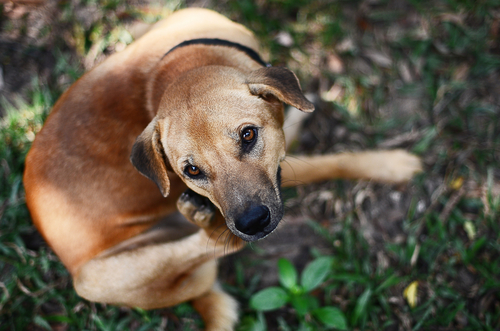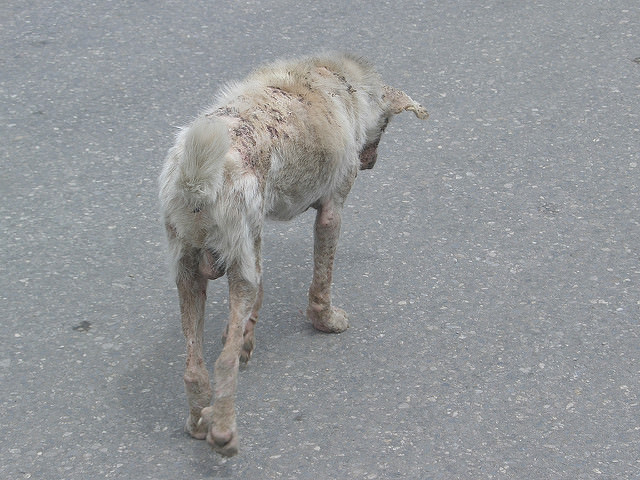There are two types of mange in dogs, Demodectic mange and Sarcoptic mange and because one type is contagious between dogs and people as well as other dogs, it is important to be aware of the differences. Both can appear as hair loss and redness of the skin, and/or itching.
Demodectic mange
Demodectic mange in dogs is caused by a skin mite known as Demodex Canis (and other Demodex species). Demodex mites can live on normal skin, but in cases where there is immune compromise, the mites overgrow and cause skin lesions. In uncomplicated cases, the affected skin is not itchy, but secondary bacterial infection can cause pruritus. There is believed to be a genetic link and affected dogs should not be bred.

The disease can be localized or generalized and the generalized cases tend to be the most difficult to treat. Early treatment is critical because if your dog matures completely with the mite still overgrowing, there is a chance that his immune system will give up and accept the mites’ presence, leaving little hope for a cure. Young dogs and senior dogs are most likely to be affected. Demodex is not contagious between dogs (or to people) as the mites tend to be host specific. Humans have their own demodex species, but it does not come from the dog. To treat Demodectic mange you will need the help of a veterinarian because it is imperative that any underlying disease or immune compromise be investigated thoroughly.
Sarcoptic mange
Sarcoptic mange is caused by Sarcoptes scabiei mites. It is the contagious form of mange and the mites burrow down into the skin to lay eggs. Affected dogs will be very itchy with patchy hair loss. They can have itchy crusts on ears, elbows and underside and there is even a chance that the people in your home could become infected. People refer to sarcoptic mage as “scabies” and the trouble is spread freely between dogs.

Your vet will try to scrape the skin to visualize the mites, but they burrow very deep into the skin. Many times a secondary infection develops also and must be managed. There are effective treatments and your vet can definitely help. Scabies is curable if treated appropriately. Don’t worry. It is self-limiting for people, but if you think that your dog could have sarcoptic mange, see your vet (and maybe your physician) as soon as possible.
Any dog with skin lesions should be evaluated by a veterinarian to protect him and your human family. Early intervention is critical to minimize suffering and insure effective treatment. It is very important that you know the real diagnosis so suitable treatment can be implemented. Otherwise you might be trying to treat the wrong thing at home to your dog’s detriment.
Please look me up on Twitter, Facebook and Google+ . I love hearing about your pets!

